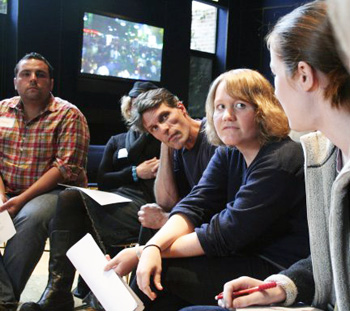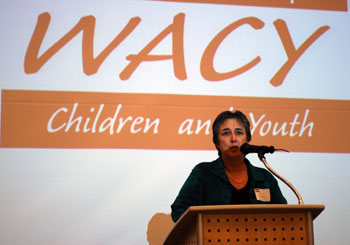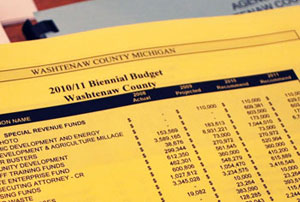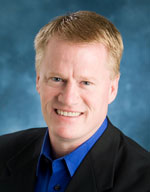
Lea Detlefs (far right) and Nicole Stagg (center right), facilitators from CommonGround – part of the University of Michigan’s social justice education program Intergroup Relations – lead high school and university students from southeast Michigan in a discussion about the social barriers posed by race, religion, income level and other divisive factors in their communities as part of the University Musical Society's Freedom Without Walls Oct. 4 kickoff. (Photo by the writer.)
One summer, Lea Detlefs spent her time going to a mixed martial arts gym where the rest of the clients were male. She recalls an atmosphere of homophobia. They blasted music with lyrics she found sexist. But she never complained.
“I was afraid to speak up,” Detlefs said. “I couldn’t bring myself to do it.”
Detlefs – a facilitator from CommonGround, part of the University of Michigan’s social justice education program Intergroup Relations – shared that anecdote with a group of students as an example of how sex, among other things, can put up invisible walls between people. The students had gathered at the UM Alumni Center to identify, discuss and break down those barriers artistically as part of the University Musical Society’s Freedom Without Walls project.
The idea for Freedom Without Walls started with one partition in particular: the Berlin Wall. In November 1989, Germans took sledgehammers to the wall dividing their capital. Now, in celebration of the 20-year anniversary of the Wall’s fall, as well as of the UMS presentation of the Berlin Philharmonic on Nov. 17, students will design public art installations meant to tear down the less visible walls that still exist in their southeastern Michigan communities. [Full Story]









